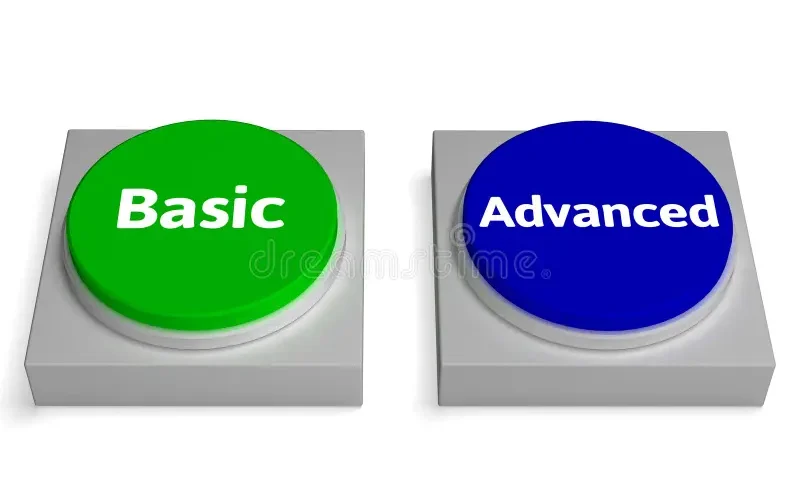By Hiran de Silva
Good evening everyone.
Today I want to ask a question that sounds simple, but might change the way you see Excel forever.
What is Basic Excel, and what is Advanced Excel?
And more importantly — on what basis do we decide?
The Pedestrian Definition
If you search online, you’ll find thousands of answers.
Basic Excel, they’ll tell you, is about simple formulas: SUM, IF, VLOOKUP.
Formatting, validation lists, maybe a pivot table if you’re brave.
Advanced Excel, on the other hand, is said to be Power Query, Power Pivot, Dynamic Arrays, and LAMBDA.
The modern tools.
The flashy tools.
The ones that fill YouTube thumbnails with “🔥 Learn This Trick!”
And that’s what everyone believes — until you put it to the test.
The Icebreaker: The Oz du Soleil Story
Let’s start with a true story.
A few years ago, Excel YouTuber Oz du Soleil released a video.
He showed how to unpivot a data table using Power Query — and then tidy it up using some IF formulas.
The answer he got was correct.
It worked beautifully.
Then a few days later, Miguel Escobar — another highly respected Excel expert — travelled all the way from South America to visit Oz in Portland, Oregon.
He came to show him an improvement.
A version that used Power Query alone — more elegant, more “advanced.”
Two brilliant minds.
Two correct answers.
And both, clearly, “Advanced Excel.”
Then I show my version.
It doesn’t use Power Query at all.
I simply enter a few negative numbers in the relevant cells, and use the SUM formula.
And the result?
Exactly the same.
Now — pause a moment.
Let’s ask the question:
Which is Advanced Excel, and which is Basic Excel?
The Audience Reaction
At this stage, everyone in the room agrees on two things.
First, they agree that my solution is “Basic Excel.”
After all, I only used cell entry and the SUM formula — the first thing anyone learns.
Second, they agree that the Basic Excel solution gets to the answer faster.
So far, so good.
But then, we change the game.
The Reframe: Scaling the Problem
Now I ask the audience to imagine that we’re not dealing with three subjects.
Let’s imagine there are hundreds — maybe thousands — of contributors.
Spread across the world.
Submitting data continuously.
And we need the totals to update automatically.
Unattended.
Visible to everyone, all the time.
New participants should be able to join at any time.
And all of it must run inside Excel.
Then I ask again:
Which is Advanced Excel, and which is Basic?
Suddenly, the room goes quiet.
No one can see how Power Query could possibly handle that scenario.
It’s batch-based.
It doesn’t run live.
It can’t send data back.
Someone usually says:
“That’s beyond Excel.”
And that’s when I smile.
Because it isn’t.
The Demonstration: The Four Buttons
I open a spreadsheet with four buttons on it:
- Create Database.
- Create Table.
- Put Data.
- Get Data.
I have a small list of rockstars in a table.
I delete it.
I save the workbook.
I reopen it — the list is gone.
Exactly as you’d expect.
Then I click the fourth button — Get Data — and the list instantly reappears.
The audience stares.
And I ask:
“What just happened?”
The Reveal
Let me explain.
When I clicked those buttons, Excel quietly created and used its own relational database — the ACE database engine — which comes as part of your Excel license.
It created a table.
It stored the data.
And it retrieved it — all using native Excel code.
No external system.
No Power Query.
No add-ins.
Just Excel.
If that sounds “Advanced,” remember this: the ACE database engine has been part of Excel since 1997.
So by Mark Proctor’s own definition, that makes it Basic Excel.
The Paradox
Here’s the paradox:
What looks simple — is actually powerful.
What looks advanced — is often limited.
Because what we think of as “Advanced Excel” is really about features.
But what makes Excel truly powerful is architecture.
When you connect Excel to its own relational database, you unlock a level of scalability and reliability that Power Query and Power Pivot can’t reach — not because they’re bad tools, but because they weren’t designed for that job.
This isn’t complicated code.
It’s one line of ADO instruction.
It connects.
It executes a simple SQL statement.
It disconnects.
All in milliseconds.
And if you can copy and paste a recipe, you can copy and paste this.
So is it Advanced Excel — or Basic Excel?
The Scaling Proof
Now we extend this same concept.
Suppose every participant around the world has this same workbook.
Each one uploads their transactions — “Put” — and retrieves the current state — “Get.”
The database sits on a shared drive or cloud location.
Instantly, we have a global, live, bottom-up consolidation system.
Unlimited users.
No external links.
No Power Query refreshes.
No broken formulas.
Fully transparent.
Fully live.
And all of it built from the simplest Excel formula of all: SUM.
So I ask again:
Which is Basic Excel, and which is Advanced?
The Broader Point
Most people decide based on appearance.
If it looks complicated, they call it “advanced.”
If it looks simple, they call it “basic.”
But simplicity achieved through deep understanding is not basic.
It’s mastery.
In Excel — as in music, mathematics, or architecture — the highest level of skill produces elegant simplicity.
And if you look closely, you’ll see that what we now call “Advanced Excel” — Power Query, Dynamic Arrays, LAMBDA — all live inside the spreadsheet.
They don’t expand Excel’s world.
They make the walls of the spreadsheet more comfortable.
What I’ve shown you today steps outside that box —
into Excel’s true native power as a client in a client–server world.
That’s not complicated.
That’s not advanced.
That’s just forgotten basic Excel.
The Closing Challenge
So I’ll end with this question — the same one we began with:
What is Basic Excel, and what is Advanced Excel?
And what criteria do you use to decide?
Is it the number of functions?
The length of the formula?
The presence of Power Query?
Or is it the clarity, simplicity, scalability, and power of the result?
Because if we judge by impact —
then the most advanced thing you can do in Excel…
is to rediscover its basics.
Thank you.






Add comment